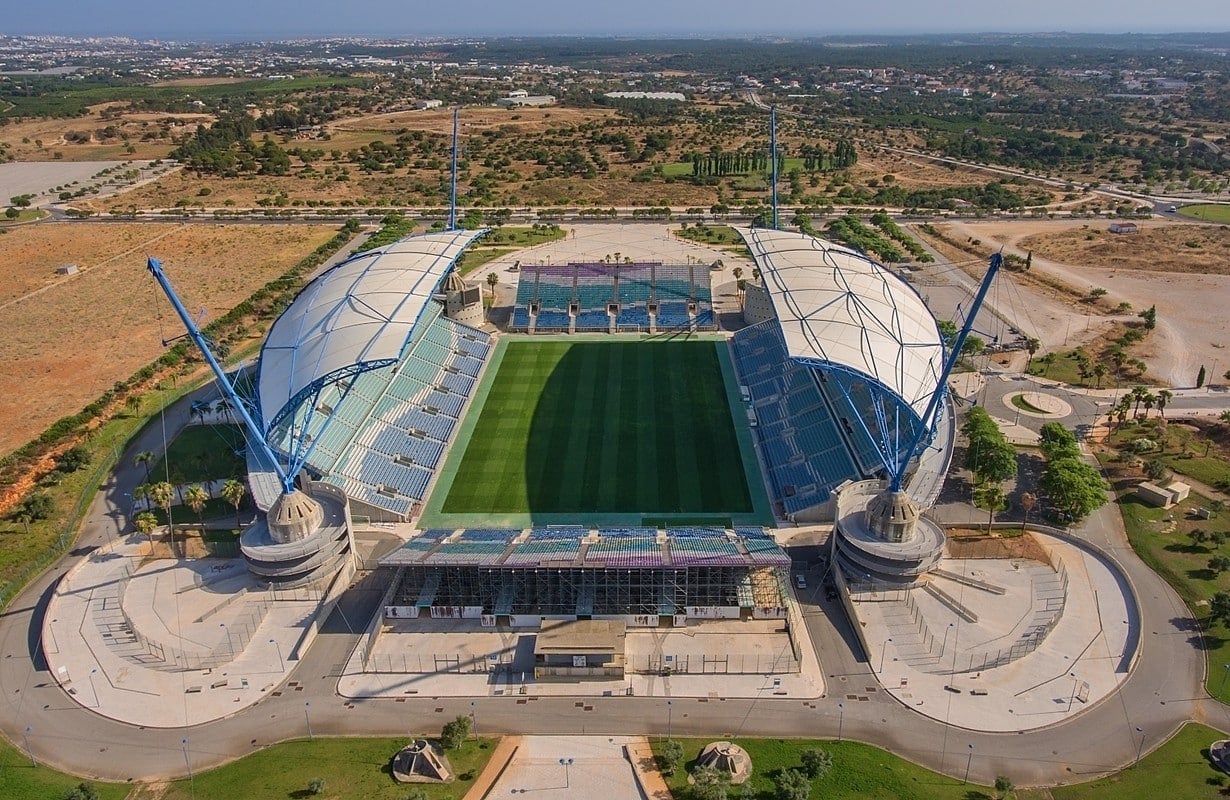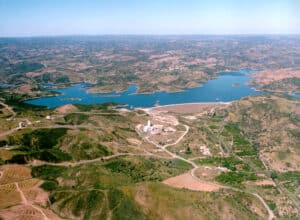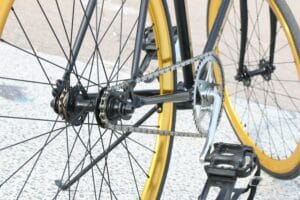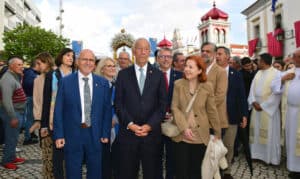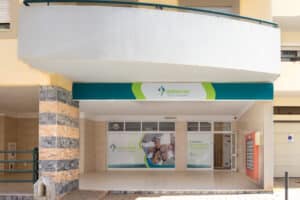The Algarve Stadium was built for the Euro 2004
Often criticised for not being used enough, the Algarve Stadium (Estádio do Algarve) has been hailed a “commercial success” by the mayors of Faro and Loulé, who have revealed that the final instalment of the loan taken out to finance its construction has been paid this year.
The stadium is located at Parque das Cidades on the border between the municipalities of Loulé and Faro. With a capacity for over 30,000 people, it was one of the 10 stadiums purposely built or renovated for the Euro 2004.
But once the tournament was over, the stadium seemed to have lost its purpose. None of the Algarve’s biggest football teams used it as their home stadium, and many were left wondering what the point was of building such a large stadium.
Efforts were made over the years to diversify the kinds of events that were held at the stadium, so much so that the Faro-Loulé Municipalities Association (which manages the stadium) says it is currently a “commercial success.”
The final construction cost of the facility was just over €38 million, with €9.9 million funded by the European Union and the remaining amount covered by two loans taken out by the municipalities of Faro and Loulé.
A source from the stadium told Lusa news agency that the infrastructure registered profits of over €24,000 in 2022 and over €142,000 in 2023.
“I think what has kept the stadium in good condition today is the cooperation between the Faro and Loulé city councils (…) And I think the key was not letting it deteriorate, trying to bring more activities to the area. We will have more activities in those spaces, and we are working on it with good prospects,” said Faro mayor, Rogério Bacalhau.
Vítor Aleixo, mayor of Loulé, also believes that the investment in the stadium was worth it, dubbing it a “central hub” with “excellent accessibility” – the stadium is located near the A22 motorway and EN125 national road.
He also said that the stadium brought life to a previously deserted area, having led to the created of a detailed plan for the area. The Laura Aires Regional Laboratory has already been built nearby, while the Parque das Cidades will also be home to the Algarve’s long-awaited Central Hospital.
“Over the past 20 years, there have been hundreds of events, not just football (matches), but also other gatherings that attract thousands of people, the latest being the World Youth Days,” said Vítor Aleixo.
The mayors deny that the stadium had become a “white elephant” for the region, stating that the revenue it generates has managed to cover its construction and maintenance costs.
“There are many activities that (…) people are not even aware of. That’s why people often talk about a white elephant,” said Rogério Bacalhau, stressing that the stadium hosts between 150 and 200 events a year. “It’s just that the general public is often not aware of them,” the mayor added.
Nuno Guerreiro, the stadium’s director, has revealed that the stadium is so busy that it hardly has any room in its schedule for new events.
“We are experiencing high demand from companies for conventions, themed meetings, private meetings, use of our restaurant, and other purposes—not just for shows, football, concerts, or other events,” said Nuno Guerreiro.
He added: “The stadium is fully booked for sports, especially football. We only have the occasional capacity to fit in one game, whether it be football, rugby, or something else”.
The stadium is home to Gibraltar’s national football team and is also a frequent venue for the Portuguese national team, having recently hosted Portugal’s historic 9-0 victory over Luxembourg.

